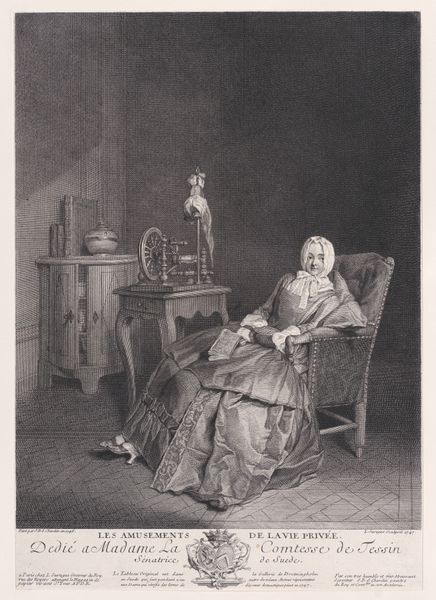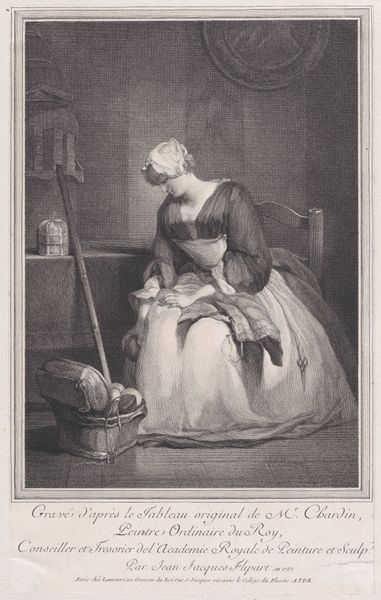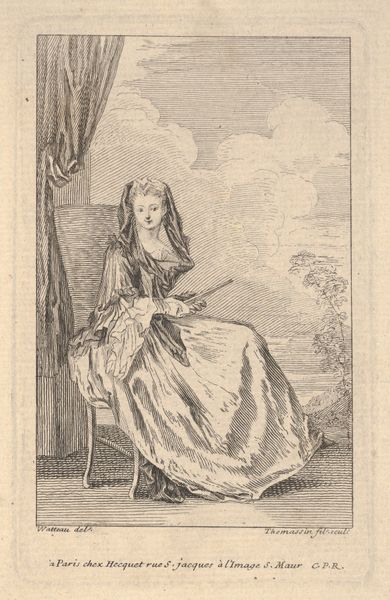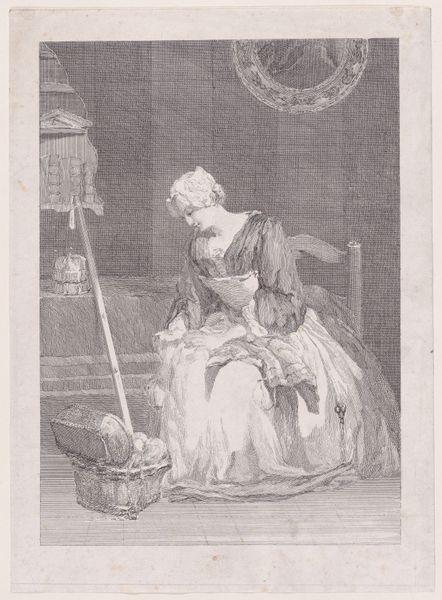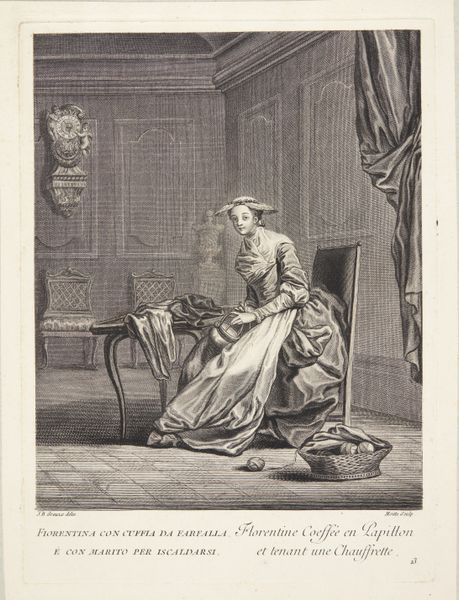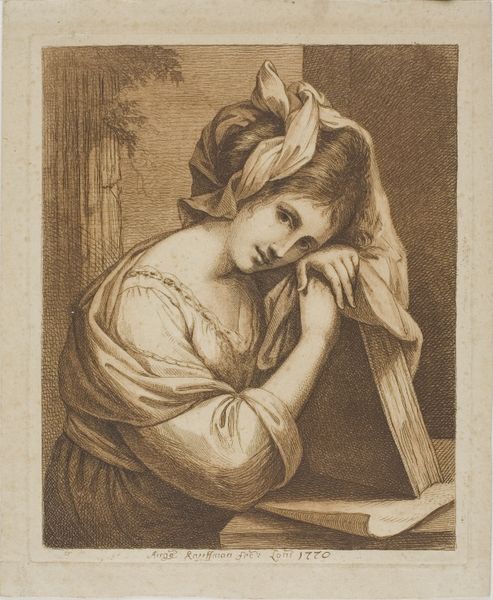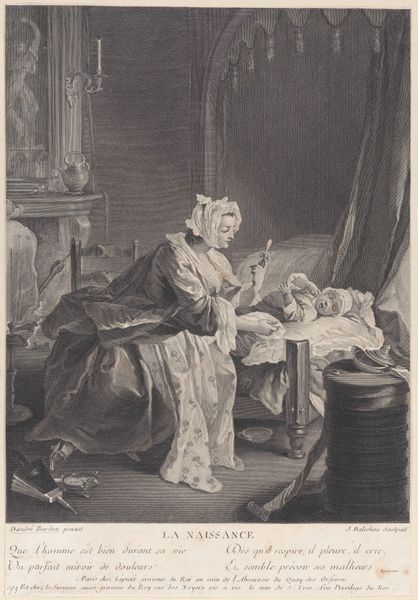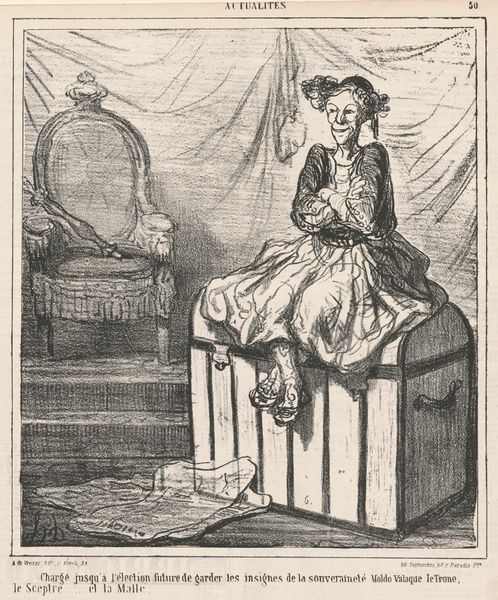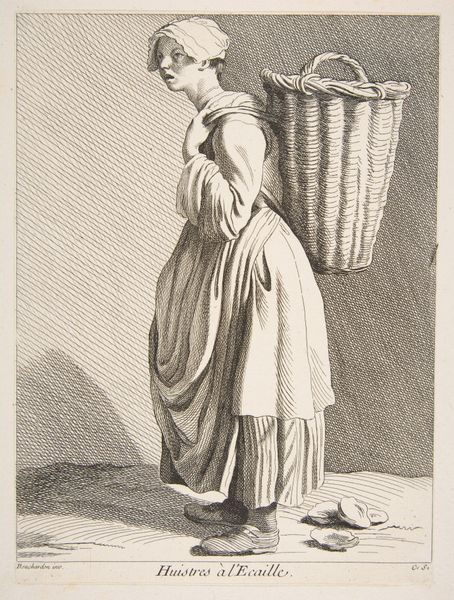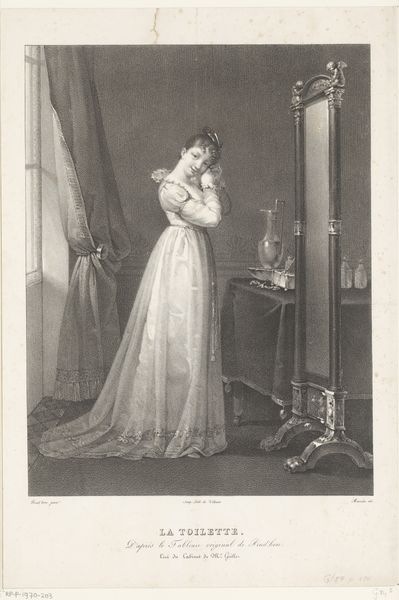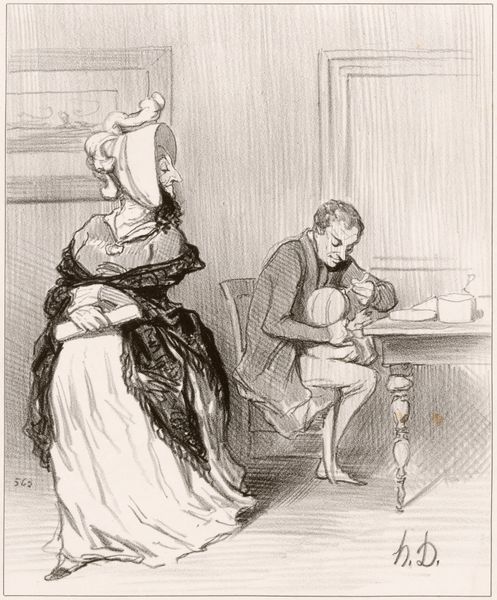
drawing, print, etching, pencil, engraving
#
portrait
#
drawing
# print
#
etching
#
pencil drawing
#
pencil
#
genre-painting
#
engraving
#
rococo
Dimensions: Sheet (Trimmed): 8 15/16 × 6 15/16 in. (22.7 × 17.6 cm)
Copyright: Public Domain
Curator: "Little Girl with Cherries," created in 1738 by Charles Nicolas Cochin I, presents a snapshot of Rococo era leisure. This engraving, etching, and pencil work resides here at the Metropolitan Museum of Art. What's your initial take on this piece? Editor: Immediately, I'm drawn to the monochromatic rendering. The delicate lines of the etching seem to soften the stark contrast, creating an interesting texture that catches light, but is muted. There's something unsettling about it that the title seems to belie. Curator: Absolutely. Viewing this now, it's difficult to ignore the questions it raises about childhood and representation. Cochin created this in the heart of the Enlightenment, which had developing, and sometimes contradictory, ideas about children and their roles within families. Consider the layers of performance involved – a staged domesticity, if you will, as childhood itself becomes something to be curated and displayed, not entirely dissimilar to today’s carefully curated Instagram feeds. Editor: I see what you mean about staged domesticity. The way the light falls on the girl's dress, highlighting its folds and textures, strikes me as almost overly deliberate. I find it intriguing how Cochin utilizes line weight to create a sense of volume, particularly in the dress and the surrounding basket, despite the fact it almost lacks shading. Curator: We should also think about this piece’s original function, which was as a print designed for a growing market that catered to the upper and middle classes. Cochin’s father held the esteemed position of engraver for the King. The choice of subject matter, the innocent, carefully positioned girl, tells us a lot about societal values and aspirations. The themes of domesticity, pleasure, and youth were certainly popular—but these are complex issues when we understand the vast majority of girls during this time in French society did not live similar lives. Editor: And yet, if we focus on the relationship between the seated figure and the surrounding negative space, there's also a tension. It feels less like observation and more like Cochin plays with geometry, carving the etching into different quadrants: the basket of fruit here, her vacant and pensive stare there... Curator: A very salient point. By positioning art and gender into broader societal and philosophical debates, we glean a lot more about how perceptions of family and identity developed over time. Editor: And in tracing lines, surfaces, and textures through your sociological framing, it's incredible to imagine all of the interpretations we continue to miss!
Comments
No comments
Be the first to comment and join the conversation on the ultimate creative platform.
